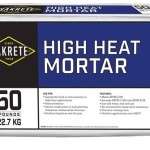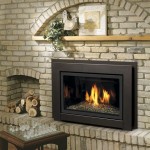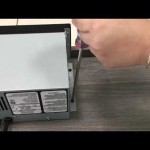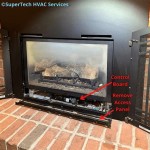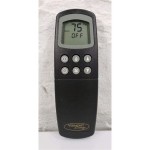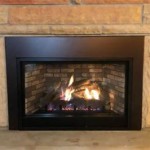Can You Install A Gas Fireplace Without A Chimney? Exploring Venting Options
The allure of a gas fireplace is undeniable. They offer warmth, ambiance, and a cozy focal point for a room. However, the traditional image of a fireplace often includes a prominent chimney. For many homes, the absence of a pre-existing chimney might seem like an insurmountable obstacle to installing a gas fireplace. Fortunately, modern technology provides several viable venting solutions that allow homeowners to enjoy the benefits of a gas fireplace even without a conventional chimney.
This article will explore the available options for installing a gas fireplace without a chimney, detailing the principles behind each method, the advantages and disadvantages, and crucial considerations for a safe and effective installation. The information presented aims to provide a comprehensive understanding of the possibilities, enabling informed decisions regarding gas fireplace installation in homes lacking traditional chimney infrastructure.
Understanding the Essential Role of Venting
Before examining specific chimney alternatives, it's crucial to understand why venting is so vital for gas fireplaces. The combustion process in a gas fireplace produces byproducts, including carbon dioxide, water vapor, and potentially dangerous carbon monoxide. A properly functioning venting system ensures that these gases are safely expelled from the home, preventing their accumulation and potential health hazards. Without proper venting, carbon monoxide poisoning is a severe risk, making this aspect of gas fireplace installation paramount.
The efficiency of combustion also plays a role. Properly vented fireplaces allow for optimal airflow, which contributes to more complete combustion of the gas fuel. This leads to a cleaner burn, reduced emissions, and improved energy efficiency. Therefore, any venting solution must prioritize both safety in terms of gas removal and efficiency in terms of combustion performance.
Beyond safety and efficiency, venting also addresses moisture management. The combustion process generates water vapor, which can condense within the fireplace and venting system. If not properly managed, this condensation can lead to corrosion, mold growth, and damage to the surrounding structure. Venting systems are designed to manage this moisture, preventing it from causing problems within the home.
Direct Vent Gas Fireplaces: A Popular Solution
Direct vent gas fireplaces are a common and effective solution for installations without a traditional chimney. These fireplaces are designed as sealed units, meaning they draw combustion air from outside the home and exhaust combustion byproducts directly outside, also. This is achieved through a dual-concentric vent pipe system. One pipe draws fresh air into the firebox, and the other expels exhaust gases. Because the fireplace is sealed, there's no exchange of air between the fireplace and the room, which improves energy efficiency and prevents drafts.
The venting can be routed horizontally through an exterior wall or vertically through the roof. Horizontal venting is often simpler and less expensive to install, while vertical venting might be preferred for aesthetic reasons or to meet local building codes. In either case, the venting system must be carefully installed according to the manufacturer's specifications to ensure proper sealing and functionality.
Direct vent fireplaces offer several advantages. They are highly efficient, typically boasting AFUE (Annual Fuel Utilization Efficiency) ratings of 70% or higher. Their sealed design prevents drafts and minimizes heat loss. The closed combustion system also reduces the risk of backdrafting, where exhaust gases are drawn back into the home. Furthermore, they can be installed on almost any exterior wall, offering flexibility in placement within the home.
However, direct vent fireplaces also have some limitations. The venting system requires a direct path to the exterior, which might not be possible in all situations. The appearance of the vent termination on the exterior wall or roof can be a concern for some homeowners. The cost of installation can also be higher compared to vent-free options, although the improved efficiency and safety features often justify the investment.
Installation of a direct vent gas fireplace should always be performed by a qualified professional. This ensures that the venting system is properly sealed and installed according to code. A proper installation is essential for safety, efficiency, and long-term reliability.
Vent-Free Gas Fireplaces: Considerations and Restrictions
Vent-free (also known as ventless) gas fireplaces offer the ultimate in installation flexibility, as they require no venting system at all. These fireplaces are designed to burn gas so cleanly that the exhaust gases are considered safe to release directly into the room. They are equipped with oxygen depletion sensors (ODS) that automatically shut off the gas supply if the oxygen level in the room drops to a potentially dangerous level.
While vent-free fireplaces offer convenience and lower installation costs, they are subject to significant restrictions and require careful consideration. Many jurisdictions prohibit the installation of vent-free fireplaces due to concerns about indoor air quality and carbon monoxide poisoning. Even in areas where they are permitted, there may be limitations on the size of the fireplace and the size of the room in which it's installed. Consult local building codes before considering a vent-free option.
Furthermore, while vent-free fireplaces are designed to burn cleanly, they still release some combustion byproducts into the room, including water vapor, carbon dioxide, and trace amounts of carbon monoxide. These byproducts can contribute to indoor air pollution and potentially exacerbate respiratory problems, especially in individuals with asthma or other pre-existing conditions.
Vent-free fireplaces also increase humidity levels in the room. This can be beneficial in dry climates, but in humid climates, it can contribute to mold growth and discomfort. Proper ventilation of the room is crucial when using a vent-free fireplace to mitigate these effects.
Despite these concerns, vent-free fireplaces can be a viable option in certain situations, particularly in smaller rooms or areas where venting is impractical. However, it's essential to weigh the potential risks against the benefits and carefully consider the local regulations and recommendations. Regularly testing for carbon monoxide levels is highly recommended in homes with vent-free gas appliances. Professional installation and regular maintenance are also critical for ensuring safe and efficient operation.
Power Vent Gas Fireplaces: Overcoming Installation Obstacles
Power vent gas fireplaces offer a solution for situations where traditional venting methods are not feasible. These fireplaces utilize a fan-powered venting system to assist in the removal of exhaust gases. The fan creates a positive pressure within the vent pipe, allowing for longer vent runs and more complex venting configurations. This makes them suitable for installations where the fireplace is located far from an exterior wall or roof.
Power vent systems typically use smaller-diameter vent pipes compared to direct vent systems, which can make them easier to conceal and install. The vent pipe can be routed horizontally, vertically, or even through multiple bends, providing greater flexibility in placement. The fan unit is usually located outside the home or in an attic or crawl space to minimize noise.
Power vent gas fireplaces offer several advantages. They allow for greater flexibility in fireplace placement, enabling installations in rooms that would otherwise be unsuitable for a gas fireplace. The positive pressure venting system reduces the risk of backdrafting, enhancing safety. The smaller-diameter vent pipes can be easier to conceal, improving the aesthetics of the installation.
However, power vent fireplaces also have some disadvantages. They require an electrical connection to power the fan, which can increase installation costs. The fan unit can generate some noise, although modern units are designed to be relatively quiet. The cost of a power vent system can be higher compared to direct vent systems, reflecting the additional components and complexity.
Like other gas fireplace installations, a power vent system should only be installed by a qualified professional. This ensures that the electrical connections are properly made, the venting system is correctly sized and installed, and the fan unit is functioning effectively. Regular maintenance of the fan unit is also necessary to ensure reliable operation.
In summary, while the lack of a traditional chimney might seem like a significant hurdle, various innovative venting solutions enable homeowners to enjoy the warmth and ambiance of a gas fireplace. Direct vent, vent-free (with caution and understanding of local regulations), and power vent systems each offer distinct advantages and disadvantages. Careful consideration of these factors, along with professional advice, is essential for selecting the most appropriate and safest venting option for a specific home and application.

Install A Fireplace Without Chimney Ventless

Fires Choices For Homes Without Chimneys Wakefords Fireplaces And Stoves

How To Vent A Gas Fireplace Without Chimney Vertical Care

5 Types Of Fireplaces For Apartments Homes Without Chimneys Modern Blaze

If You Have A Gas Fireplace It May Or Not Chimney Flue

Ventless Gas Fireplace Propane
:max_bytes(150000):strip_icc()/ventless-gas-fireplaces-4160746-hero-f9d4bdcd9bd446eb84406de306f790ba.jpg?strip=all)
How To Pick Out A Ventless Gas Fireplace

Can I Have A Stove Without Chimney Stovax Gazco

Do You Need A Chimney For Fireplace Direct Fireplaces

What Is A Ventless Gas Fireplace Experts In Gaithersbutg Md
Related Posts

